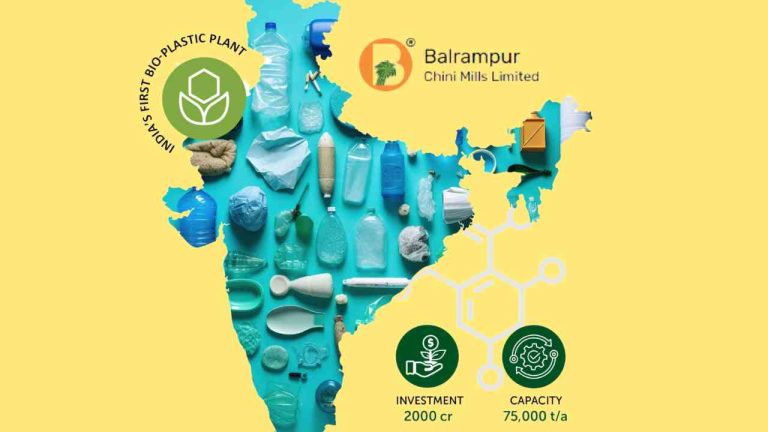In a significant move towards environmental sustainability, Avantika Saraogi, ED, Kolkata-based sugar producer Balrampur Chini Mills (BCML) has announced a major foray into the production of polylactic acid (PLA) bioplastic. This ambitious project positions BCML at the forefront of India’s fight against plastic pollution.
A Commitment to a Greener Future
The ₹2,000 crore investment will see BCML construct a 75,000 tonne per annum PLA manufacturing unit. This venture is not only expected to generate substantial revenue potential of ₹1,500-2,000 crore per annum but also significantly reduce dependence on traditional plastics. PLA, derived from renewable resources like corn starch or sugarcane, offers a more eco-friendly alternative.
Sustainable Practices and Economic Benefits
The strategic placement of the PLA unit adjacent to existing sugar plants will result in considerable cost savings on transportation. This focus on operational efficiency aligns with BCML’s commitment to sustainable practices throughout the production process.
The Advantages of PLA Highlighted in the Balrampur Chini Mills Article
The article outlines several key advantages of PLA (polylactic acid) bioplastic compared to traditional plastics:
1. Environmentally Friendly:
- Bio-based: Unlike traditional plastics derived from petroleum, PLA is made from renewable resources like corn starch or sugarcane, reducing reliance on fossil fuels.
- Biodegradable: PLA breaks down significantly faster than traditional plastics, minimizing their presence in landfills and the environment. This helps combat plastic pollution, a major environmental concern.
2. Wide Range of Applications:
PLA’s versatility makes it a suitable alternative for various products currently reliant on traditional plastics. The article mentions:
- Packaging materials: PLA can be used for packaging food, beverages, and other items, offering a more sustainable option for consumers and businesses.
- Disposable cutlery: PLA cutlery provides an eco-friendly alternative to traditional plastic cutlery, which often ends up in landfills or litters the environment.
- Medical devices: PLA’s biocompatible properties make it suitable for certain medical applications, potentially reducing reliance on non-degradable plastics in the medical field.
3. Cost-Competitive:
The article highlights that PLA is currently priced around ₹250-300 per kilogram, making it one of the most affordable bio-plastic options available. This price competitiveness is crucial for widespread adoption of PLA as a viable alternative.
A Pioneering Effort
BCML’s venture into PLA production marks a significant milestone for India. This project not only positions BCML as a leader in the bioplastics industry but also paves the way for a more sustainable future.
While Balrampur Chini Mills (BCML) is making a noteworthy entrance into the PLA bioplastics market, several established players dominate global PLA production. Here’s a look at some major players:
- NatureWorks: This American company is a world leader in PLA, with a production capacity exceeding 250,000 tonnes per year. They are known for their Ingeo™ brand of bioplastics.
- Total Corbion: A joint venture between French oil giant Total and Dutch fermentation specialist Corbion, this company boasts a production capacity of around 70,000 tonnes per annum.
- Braskem: This Brazilian petrochemical company has a PLA production capacity exceeding 50,000 tonnes annually. Their Mvěrl™ brand focuses on bio-based solutions.
- REVTEC: This Chinese company is a major presence in the Asian PLA market, with a production capacity exceeding 30,000 tonnes per year.
- Tianan Biotech: Another key player in China, Tianan Biotech has a production capacity exceeding 20,000 tonnes of PLA annually.
In summary, PLA offers a compelling combination of environmental benefits, versatility, and cost-competitiveness, positioning it as a promising alternative to traditional plastics.
Balrampur Chini Mills’ investment in PLA production signifies a significant step towards a more sustainable future.
Tech Trailblazers

